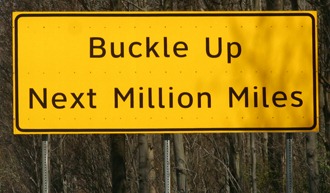Scientific Laws
Original Post: 9 May 2012
Posted Here: 4 December 2017
 A scientific law is a statement that something always happens in a certain way or is always true. Unlike a civil law, such as a traffic law, a scientific law cannot be broken. Wile E. Coyote may run off the cliff and not immediately fall, but that’s just cartoon fiction. I don’t recommend that you try this yourself!
A scientific law is a statement that something always happens in a certain way or is always true. Unlike a civil law, such as a traffic law, a scientific law cannot be broken. Wile E. Coyote may run off the cliff and not immediately fall, but that’s just cartoon fiction. I don’t recommend that you try this yourself!
I pointed out in my post about theories and hypotheses, important parts of our scientific “method,” that these two things are often confused and abused, either by ignorance or by laziness. Scientific Laws are also sometimes subject to a bit of confusion.
I can recall seeing in, of all places, a chemistry textbook the statement that when a theory has been supported by enough evidence and has been around long enough it becomes a law. If you keep an apple around long enough, you may notice that it becomes soft, juicy and orangish. But no one would suggest that the apple has become an orange. The same should be true of theories and laws: they are as different as apples and oranges.
If you recall, a theory is an explanation that has been supported by evidence. A law is not an explanation. A law, in science, is simply a statement that something always is true or always happens in a certain way. Newton’s Law of Gravity, for example, says that every particle in the universe attracts every other particle with a force that is proportional to their masses (if the masses double, the attractive force doubles) and inversely proportional to the square of the distance between them (if they become twice as far apart, the force of attraction is only one-fourth as much.) The Law of Gravity does not explain why there is an attraction or why it has these mathematical properties. It just says that we’ve always observed these things to be true. Newton did not state a Theory of Gravity which has become, in the years that have elapsed, a Law of Gravity.
The interesting thing is that theories and laws have a similarity: they are both based on evidence and both could be disproven by some new, contrary evidence. The way that the planet Mercury’s elliptical orbit changes its orientation provided the evidence to say that Newton’s Law of Gravity, while being nearly correct, was wrong. Still useful, but wrong.
Science fiction writers are in some ways like Wile E. Coyote: we must obey scientific laws. If we try to “break” the law, we must at least provide some plausible explanation. When stars were observed to orbit the centers of their galaxies in paths and in times contrary to those predicted by the math of Newton’s Law of Gravity, some said this was more evidence that the Law was wrong. Others argued that “dark matter” (whatever that is) was a plausible explanation for this discrepancy. In science, we expect such arguments to be settled by finding more evidence. In science fiction, when we break scientific laws, we can only hope that our stories are published before someone comes up with the evidence to show that we were wrong.
Keep reading/keep writing – Jack